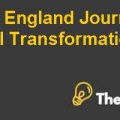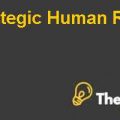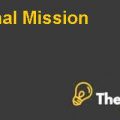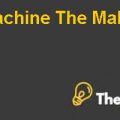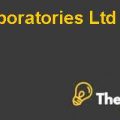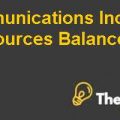Buffett’s Bid for Media General’s Newspapers Case Study Help
Introduction
The year 1850 marks a significant period of time in the market for Media General as it continues to operate in the newspaper sector. Due to high debt levels and their ratio, MEGs now face the challenge of sound financial practises. MEG proposed the idea of selling its newspaper division in order to obtain cash in this process. Buffet, the CEO of Berkshire Hathaway, expressed interest in the acquisition by providing two alternatives.
First is ($142 m) in cash, and another is ($400 million) in a term loan provided by a credit deal the buffet presented (Sesia, 2013). According to the study, buying the newspaper division with cash is better for Buffett, so this acquisition also creates a good opportunity for both in future.
Buffet’s Motivation for Purchase
The Buffet family has made a statement for the year 2012 that includes buying 63 newspapers from the company "Media General Inc." With this acquisition, a cash offer of ($142 m) is made, and debt finance is also made available, helping the organisation during its trying times. There are many factors that come into play once Buffet purchases (MEG's Newspaper),) including the fact that its media portfolio has new additions that ultimately open the door for investment opportunities.
Due to the fact that this purchasing of newspaper also includes small-town publications that have a select group of loyal readers. Another advantage of this deal is the fact that small-town newspaper encountered less rivalry than their larger counterparts or national publications. Buffet's plan of acquiring small-town newspapers contributes to the development of a long-term strategy that, in the end, aids in converting small-town readers of newspapers to the digital platform. Future years' revenue for the organisation will rise thanks to this plan.
In the newspaper business, "Media General" classified the "Tampa Tribune" as its largest publication in the course of 2012. The Tampa Tribune newspaper's pension and benefit obligations are not included in the acquisition agreement, and analysts estimate that the newspaper's asset value is around $30 million. The Buffets devised a plan, though, to leave out the Tampa Tribune from the whole acquisition of 63 newspapers.
The key reason for making this buffet purchase is that it will enhance the organization's overall revenue and, in the end, lower the cost of printing and legal fees associated with making appearances on the online platform for the benefit of subscribers. The majority of these newspapers are bought at low prices, so this transaction is regarded by analysts as a cheap purchase that enhances Buffet's financial adheres to following the acquisition.
Valuation of Newspaper Division
This assessment is based on Buffet's decision to purchase 63 newspapers after being offered $142 million to do so. To determine the precise and real value of the newspaper, analysis and review are now required. First, determine the (WACC) according to its formula, which takes into account the tax rate, weights of equity and debt, cost of equity, and cost of debt. There are quite certain assumptions to take into account while making this forecast.
First, the risk-free yield (2.90%) is computed from the Treasury bill with a maturity of 30 years because this transaction requires a long-term investment. Second, estimates that the market's risk premium is roughly (6%), and the (compound annual growth rate is about 2%. The valuation of MEG's newspaper division is based on the result of the calculation using the formula (WACC), which is (6.66%).
Take (EBIT) going forward from 2012 and subsequently add back depreciation to it for further research. Subtract the result by (net working capital and capital expenditure). Using both the WACC and CAGR, the terminal value as of the year 2016 is ($420.03 million). After subtracting the $30 million cost of "Tampa Tribune" from the acquisition, the results show that the total NPV for the MEGs in 2012 is ($361.14 m).
Since the agreed-upon cost for the purchase of the company is ($142 million dollars) and the value of the transaction after determining The net present value is ($219.14 million dollars), this analysis concludes that Buffet's offer price is incredibly low and will ultimately benefit Berkshire Hathaway through the possibility of increasing revenues. This acquisition presents a high potential for Berkshire Hathaway in the future and the present period.............
Buffett’s Bid for Media General’s Newspapers Case Study Help
This is just a sample partial case solution. Please place the order on the website to order your own originally done case solution.


